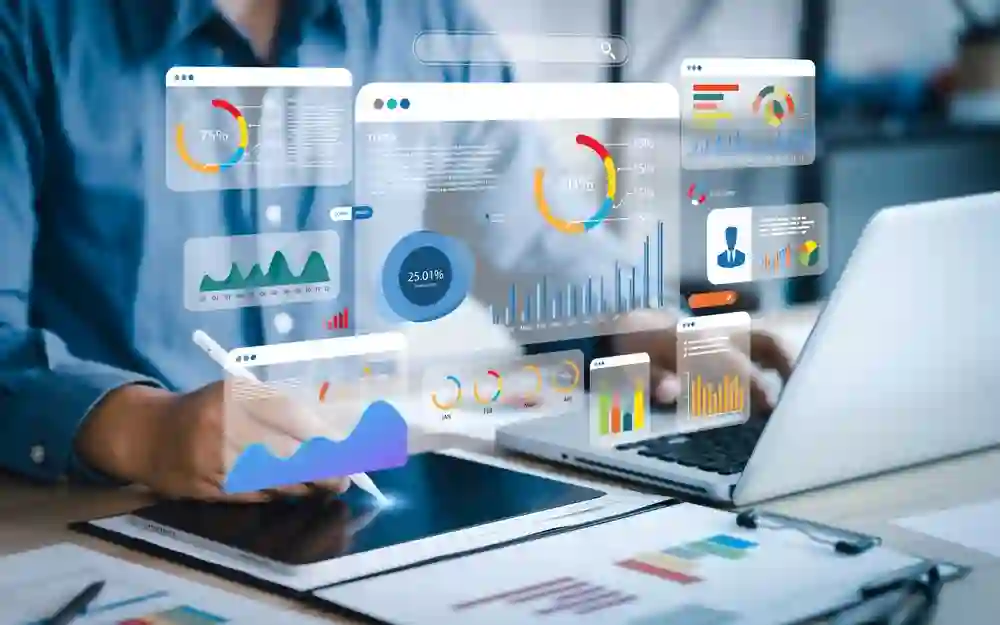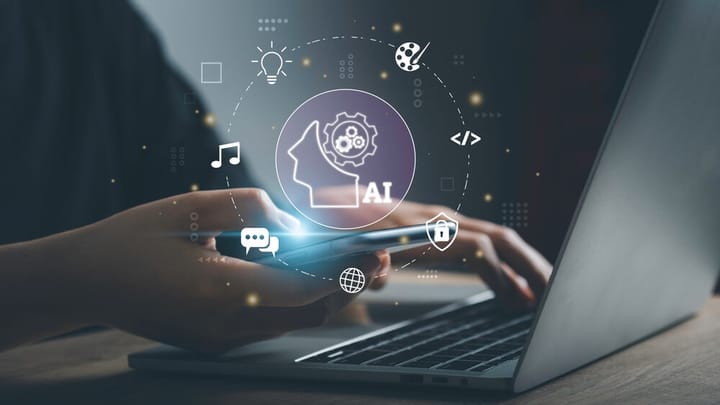AI-Powered Code Review & Bug Detection: Best AI Tools
AI-powered code review transforms development by automating bug detection and security checks. These tools use machine learning to analyze code, identify vulnerabilities, and suggest fixes. This allows developers to focus on innovation, ensuring higher quality, more secure software delivered faster.

In today's dynamic software development environment, maintaining high-quality, secure, and effective code is becoming more and more challenging. Traditional code review techniques find it difficult to keep up with the increasing complexity of systems and the need for shorter development cycles. AI-powered code review and bug identification is a game-changing technology that automates and optimizes the process using artificial intelligence (AI) and machine learning. With AI helping to improve security, accuracy, and speed, developers can now focus on creativity rather than tedious debugging and reviewing work.
The Growing Demand for AI in Code Reviews
Modern software development necessitates thousands, if not millions, of lines of code. Manually assessing this code for flaws, weaknesses, and inefficiencies is time-consuming and prone to error. Traditional code reviews are becoming less viable as demand for rapid product release and continuous integration grows. Artificial intelligence solutions solve the following issues:
- Automating security checks and error detection.
- Extracting best practices and trends from large datasets.
- Minimizes monitoring and human error.
- Increasing compliance with legal requirements and code standards.
- Improving the overall speed of software development.
AI increases overall productivity by accelerating the review process, allowing engineers to focus on production rather than debugging.
Execution of an AI-powered Code Review
AI-powered code review systems use machine learning and natural language processing (NLP) to evaluate code structure, identify flaws, and suggest fixes. These systems operate as follows:
- Look for grammatical errors, security weaknesses, and logical problems in the codebase.
- Comparing the code to industry best practices and compliance requirements.
- Give a fast answer with optimization suggestions.
- Identifying old features and suggesting replacements.
- Identifying code inefficiencies that could jeopardize performance and scalability.
Because AI techniques constantly learn from new code patterns, their capacity to discover potential vulnerabilities grows over time, eventually outperforming traditional rule-based assessments.
Software Development Advances in AI
Artificial intelligence has progressed dramatically, from simple automation tools to complicated learning systems capable of imitating human brain function. Early AI-powered code review solutions were based on predetermined rule sets, while modern AI systems use deep learning to scan massive quantities of code and make meaningful recommendations.
The key steps in AI development for software testing and debugging are:
- The emergence of AI-assisted static code analysis.
- The integration of AI into DevOps operations.
- Development of AI-powered predictive analytics for software quality assurance.
These developments laid the groundwork for more intelligent and adaptable software testing frameworks.
Key Advantages of AI-powered Bug Detection
1. Quicker Discovery of Security Flaws
AI approaches can identify problems that might otherwise go undetected during manual assessments. They analyze vast amounts of data to predict security problems before they worsen.
2. Reduced Debugging and Testing Time
AI-powered issue detection saves debugging time by discovering and resolving issues in real-time. This enables engineers to address concerns early in development, preventing costly mistakes.
3. Increased Developer Productivity
By automating repetitive operations, AI allows developers to focus on more creative and complex problem-solving instead of spending hours examining code for minor problems.
4. Improved Code Maintainability
AI-powered assessments reduce technical debt over time by ensuring maintainable and clean code.
5. More Cooperation among the Squad
By introducing AI-powered tools into code review processes, teams may improve communication and guarantee that best practices are consistently applied across projects.
6. AI-Powered Predictive Error
In addition to identifying existing weaknesses, AI predicts which areas of the code may create difficulties in the future, allowing for proactive changes before release.
The Best AI Tools for Finding Faults and Reviewing Code
Several AI-powered solutions have significantly progressed in automating code review and issue detection. Some of the more valuable examples include:
- DeepCode uses machine learning to search millions of open-source repositories for security issues and coding inefficiencies.
- Codacy is an AI-powered platform that automates code reviews, detects security flaws, and enforces coding guidelines.
- AWS CodeGuru is a tool that helps improve code quality and discover performance issues.
- Snyk Code's primary objectives are to detect security flaws and provide developers with timely feedback.
- SonarQube uses AI-driven analysis to detect faults, vulnerabilities, and code smells while adhering to industry standards.
- Tabnine is an AI-powered code completion and review tool that enables developers to write cleaner, more efficient code.
- DeepSource provides AI-powered static analysis for continuous code quality monitoring.
- Embold is a tool that detects code faults and suggests the most effective ways to enhance software maintainability.
These methods work seamlessly with modern development pipelines, enhancing code quality while maintaining quick iteration times.
Challenges and Limitations of AI in Code Reviews
While AI-powered code reviews offer significant advantages, they are not without drawbacks.
- Context Understanding: AI cannot wholly comprehend business logic, resulting in false positives and inaccurate suggestions.
- Developers Risk becoming overly reliant on AI-generated recommendations and overlooking critical difficulties.
- Concerns Concerning Bias and Ethics: AI algorithms trained on biased data may make unfair or incorrect predictions.
- Security Risks: Some AI-powered code review systems require access to proprietary code, which raises privacy concerns.
To address these issues, companies must deploy AI efficiently while maintaining human control throughout the review process.
The Application of Generative AI in Software Testing
Generative AI is reshaping the landscape of software testing and code reviews. Its ability to automatically generate test cases, identify potential points of failure, and reduce redundancy makes it a powerful asset for improving both speed and accuracy in the QA process. For a deeper look at how this technology is being used in practice, check out this detailed article on Generative AI in software testing. Teams can use AI technology to:
- Improve test coverage with minimal manual effort
- Identify issues early in the software development life cycle.
- Increase exam efficiency and accuracy.
- Reduce testing cycles while providing full software validation.
- Create fictional test data to reflect different edge circumstances and scenarios.
AI Code Review: Security Issues and Challenges
Despite the benefits, AI-powered code review has several pitfalls. Some potential hazards include:
- False Positives and False Negatives: Artificial intelligence (AI) can exaggerate unfounded concerns or ignore minor security risks.
- Over-reliance on AI: While AI improves efficiency, it still needs human supervision to detect nuances that AI may overlook.
- Data Privacy and Security Risks: To prevent data exposure, developers must ensure that AI technology meets security standards.
- Bias in AI Models: AI systems trained on biased datasets may produce skewed or inaccurate results.
- Scalability Issues: Some artificial intelligence systems may struggle to analyze large codebases efficiently.
To reduce these risks, developers should always double-check AI-generated recommendations and, if necessary, use human verification.
The Future of AI in Code Review and Bug Detection
AI technology will become more significant in software development as it advances. Here's what we should expect shortly:
- AI models will become increasingly context-aware, enabling a deeper understanding of business logic and coding structures. This advancement will lead to greater accuracy and efficiency in software development.
- Seamless Collaboration: AI will evolve from a passive reviewer to an intelligent coding assistant, working alongside developers to enhance productivity and streamline workflows.
- Advanced Security Features: AI-driven security systems will leverage cutting-edge technologies to detect and neutralize threats proactively before they can cause harm.
- Integration with Autonomous Coding Systems: AI will play a pivotal role in developing autonomous code generation, significantly reducing manual programming efforts and accelerating software development.
With these improvements, AI is poised to become a must-have tool for developers, ensuring unprecedented software quality and security.
Conclusion
AI-powered code reviews and bug detection have transformed how engineers maintain code quality and security. Artificial intelligence is crucial in software development since it automates time-consuming operations, increases efficiency, and improves accuracy. While AI provides valuable insights, the best results require a delicate balance of automation and human control. Developers who embrace AI-powered technologies while honing their coding skills will have the most excellent chance of success in the future of software development.


